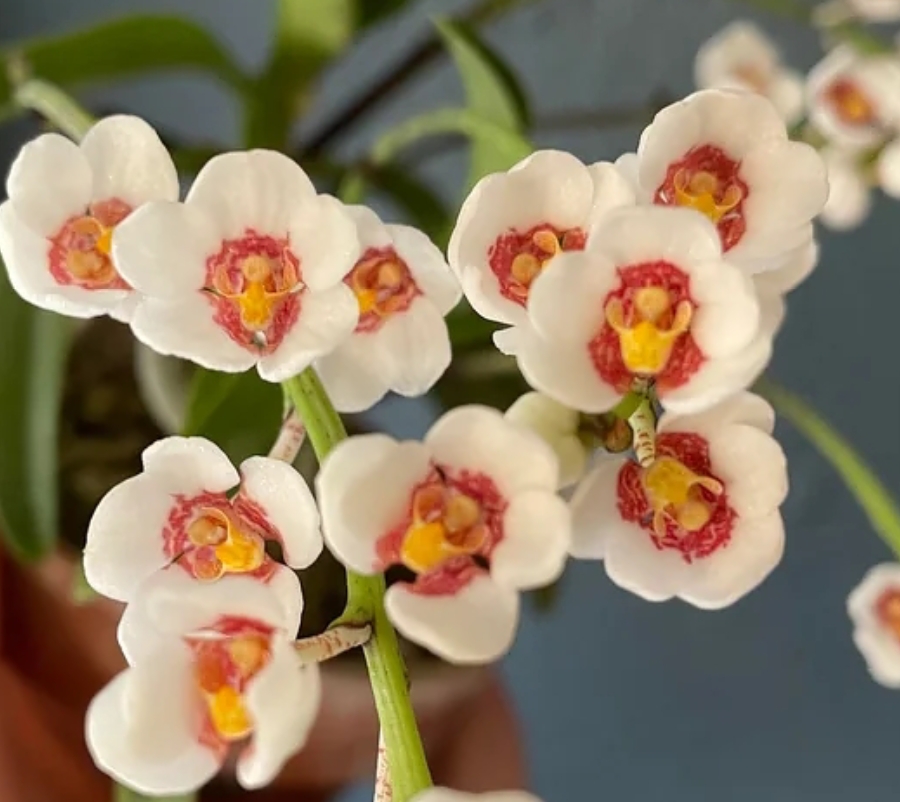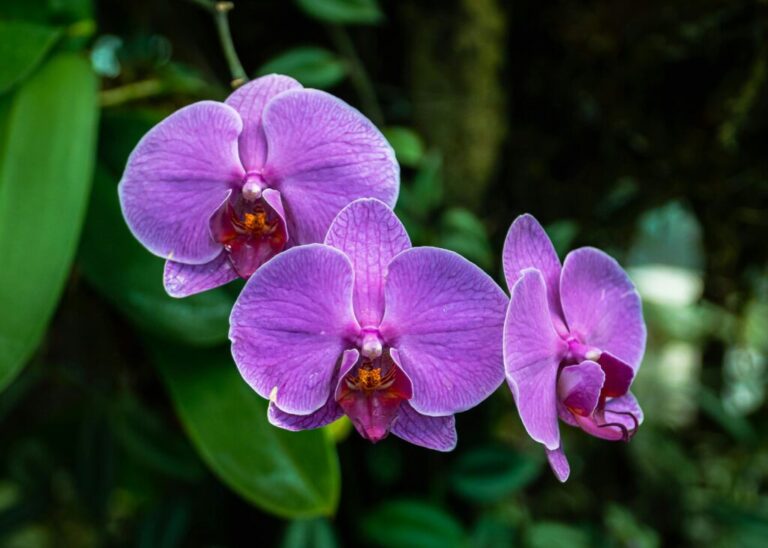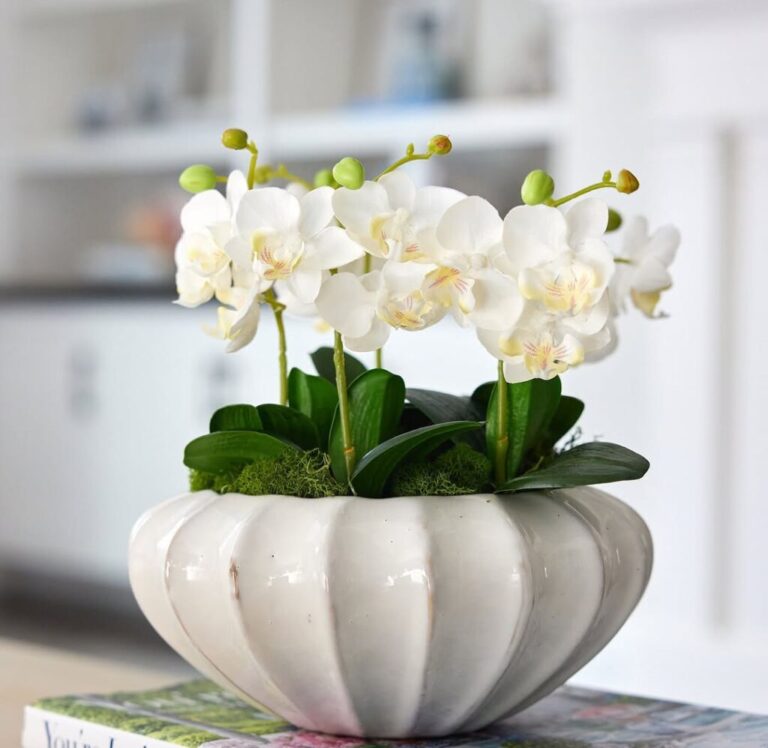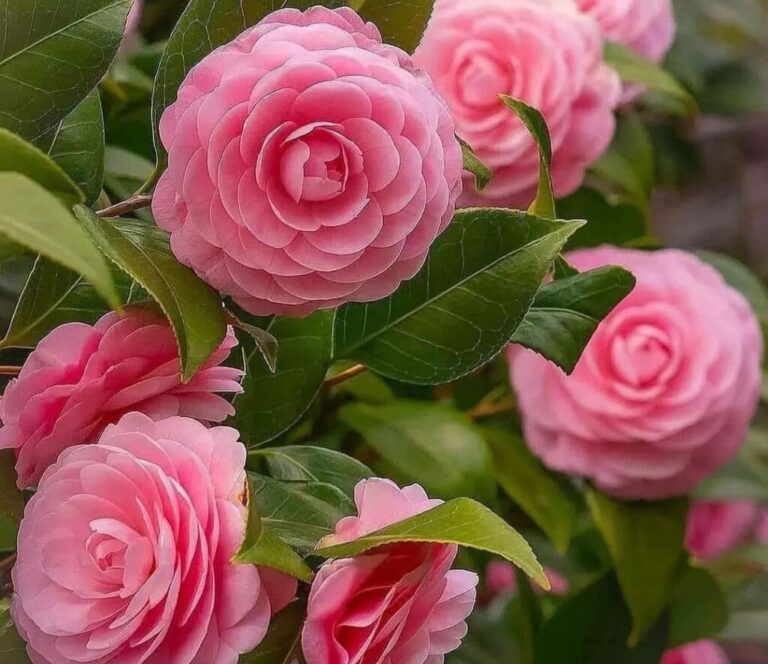Sarcochilus orchids, native to Australia’s shaded rainforests, are a rewarding and captivating choice for plant enthusiasts. These compact orchids produce cascading flower spikes with vibrant blooms that brighten any space. Sarcochilus Orchid Care is essential, as they lack pseudobulbs and rely on their roots for hydration. With the right care, they’ll reward you with stunning blooms year after year, bringing a touch of the tropics to your home or garden
What makes Sarcochilus orchids particularly special is their adaptability. They thrive in moderate temperatures, prefer high humidity, and can flourish in both mounted and potted setups. However, to unlock their full blooming potential, you need to provide them with the right balance of light, moisture, and nutrients. Many beginners struggle with common issues such as root rot, insufficient flowering, or leaf discoloration—but with expert guidance, these challenges become easy to overcome.
In this guide, we’ll explore 10 expert-backed tips that will help you cultivate strong, healthy Sarcochilus orchids with vibrant flowers and lush green foliage. Whether you’re looking to maximize blooming, prevent common care mistakes, or create the perfect environment for these orchids to thrive, this article has you covered. Let’s dive into the world of Sarcochilus orchid care and discover how you can achieve the most stunning results with minimal effort!
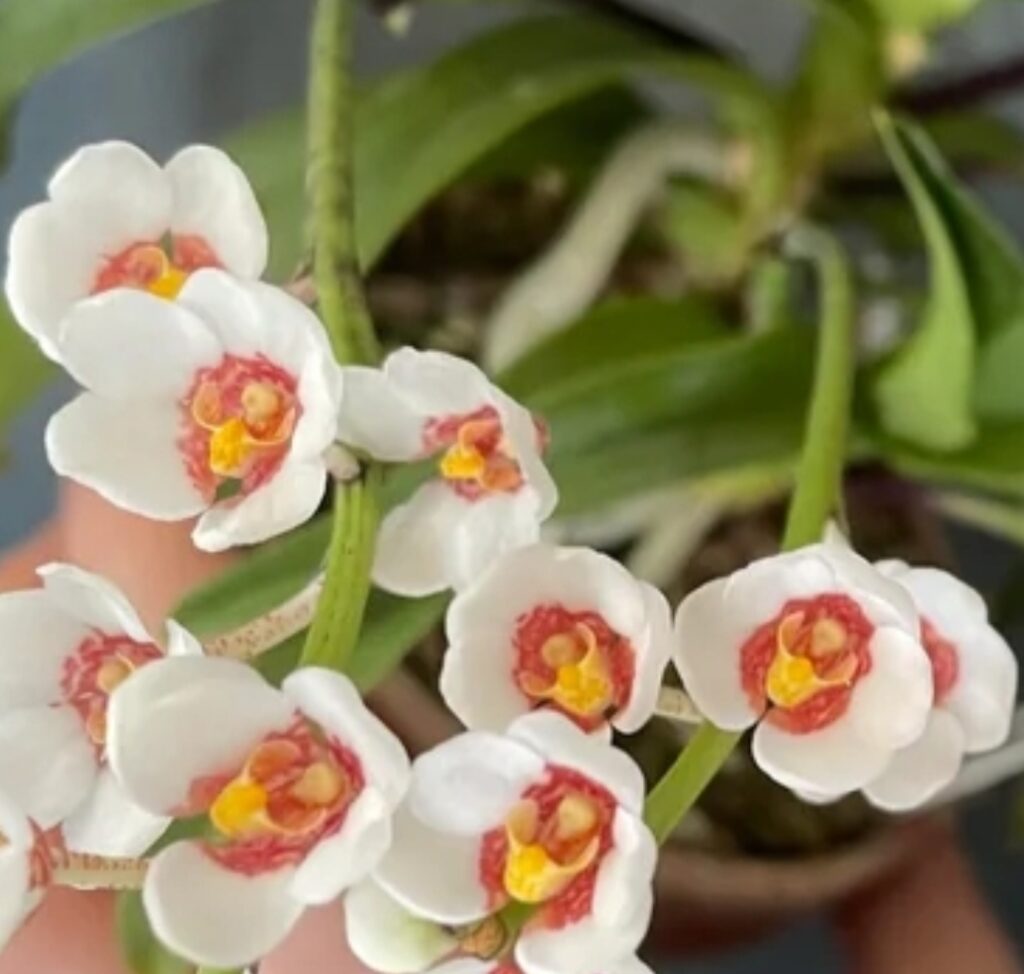
- 1 1. Provide the Perfect Light Balance
- 2 2. Maintain Optimal Temperature and Humidity
- 3 3. Water Consistently but Avoid Overwatering
- 4 4. Use a Well-Draining Potting Mix
- 5 5. Feed Regularly for Healthy Growth
- 6 6. Choose the Right Pot for Your Orchid
- 7 7. Encourage Blooming with Seasonal Adjustments
- 8 8. Prevent Common Pests and Diseases
- 9 9. Repot When Necessary
- 10 10. Protect Your Orchid During Winter
- 11 FAQs on Sarcochilus Orchid Care
Sarcochilus Orchid
| Feature | Details |
|---|---|
| Scientific Name | Sarcochilus spp. |
| Common Name | Sarcochilus Orchid |
| Family | Orchidaceae |
| Native Region | Australia |
| Growth Type | Epiphytic or Lithophytic |
| Flowering Season | Spring to Early Summer |
| Flower Colors | White, Pink, Red, Orange, Yellow |
| Light Requirement | Bright, indirect light |
| Watering Needs | Moderate, frequent watering |
| Humidity | 50-80% |
| Temperature Range | 10-26°C (50-78°F) |
| Fertilizing | Weak weekly feeding |
| Potting Medium | Bark mix, sphagnum moss |
| Repotting Frequency | Every 2-3 years |
1. Provide the Perfect Light Balance
Sarcochilus orchids require bright, indirect light to thrive, similar to Phalaenopsis orchids. If exposed to too much direct sunlight, their delicate leaves can scorch, leading to sunburned patches. However, insufficient light can prevent flowering and weaken the plant. The best placement is near an east or north-facing window, where natural light is filtered but still strong. If natural light is inadequate, supplement with full-spectrum grow lights for 12–14 hours per day to mimic their native conditions.
2. Maintain Optimal Temperature and Humidity
These orchids prefer cool to intermediate temperatures between 50–77°F (10–25°C). They thrive in high humidity, ideally around 50–70%, but also need good airflow to prevent fungal issues. If the humidity drops too low, the leaves may wrinkle, and flower production can decrease. To maintain the right balance, use a humidity tray, misting, or a humidifier. Ensure proper ventilation to prevent excess moisture from leading to rot, especially during colder months when evaporation slows down.
3. Water Consistently but Avoid Overwatering
Unlike orchids with pseudobulbs, Sarcochilus relies on frequent watering since it lacks built-in water storage. The key to success is keeping the roots consistently moist but not soggy. Watering 2–3 times a week in warm months is ideal, while in cooler seasons, reduce frequency to prevent rot. Always water in the morning so excess moisture evaporates during the day. If using sphagnum moss, check the moisture level before watering to prevent oversaturation, which can quickly lead to root issues.
4. Use a Well-Draining Potting Mix
Sarcochilus orchids require a fine-grade, moisture-retentive potting mix that allows proper drainage. A blend of fine bark, perlite, and sphagnum moss is an excellent choice, as it holds enough moisture without becoming overly compacted. Avoid traditional orchid mixes that contain large bark pieces, as they may dry out too quickly for this moisture-loving species. Repot your orchid every two years or when the mix begins to break down, ensuring the roots stay healthy and aerated.
Sarcochilus Orchid Care
| Timeframe | Care Task |
|---|---|
| Daily | Check moisture levels, mist if humidity is low. |
| 2-3 Days | Water if the potting mix is dry to the touch. |
| Weekly | Apply a balanced liquid orchid fertilizer at ¼ strength. |
| Monthly | Inspect roots and leaves for pests or diseases. |
| Every 3-6 Months | Refresh potting medium if it decomposes. |
| Every 2-3 Years | Repot to prevent overcrowding and renew medium. |
| Spring to Early Summer | Expect flowering; reduce fertilizing slightly. |
5. Feed Regularly for Healthy Growth
Fertilizing is crucial for encouraging strong roots, lush leaves, and abundant blooms. Use a balanced orchid fertilizer (20-20-20) at half-strength every week during the growing season.When growth slows down in the winter, cut back on feeding.If you prefer an organic option, try kelp extracts or fish emulsion to provide essential micronutrients. Avoid over-fertilizing, as excessive salts can build up and burn the roots, leading to weak growth and fewer flowers. Flush the potting mix monthly with clean water to remove any fertilizer residue.
6. Choose the Right Pot for Your Orchid
The right pot ensures your orchid’s roots stay healthy and well-aerated. A plastic pot with drainage holes is ideal, as it retains moisture while preventing water from pooling at the bottom. If you prefer a decorative ceramic pot, ensure it has sufficient drainage to avoid waterlogging. Many growers also use mesh pots or slotted orchid pots to improve airflow around the roots. When repotting, be gentle with the roots, as Sarcochilus orchids have delicate root systems that can be easily damaged.
7. Encourage Blooming with Seasonal Adjustments
To trigger flowering, Sarcochilus orchids need slight temperature fluctuations between day and night. A nighttime drop of 10–15°F (5–8°C) can stimulate blooming. Keep your orchid in a cooler spot at night, especially in autumn, to encourage flower spike development. If your plant isn’t flowering, check its light levels—insufficient light is one of the most common reasons for lack of blooms. Once buds form, maintain stable conditions to prevent bud blast, where buds dry up before opening.
Sarcochilus orchid varieties,
| Variety | Bloom Time | Flower Color | Special Features |
|---|---|---|---|
| Sarcochilus hartmannii | Spring to Summer | White with pink/red spots | Fragrant, compact growth |
| Sarcochilus fitzgeraldii | Spring to Early Summer | White, pink, or red | Clusters of small flowers |
| Sarcochilus ceciliae | Late Spring to Summer | Light pink to purple | Miniature, delicate blooms |
| Sarcochilus falcatus | Spring | Creamy white | Slightly twisted petals |
| Sarcochilus hillii | Spring to Summer | White with pink blush | Prefers cooler temperatures |
| Sarcochilus australis | Spring | White to pale yellow | Strongly scented flowers |
| Sarcochilus dilatatus | Late Spring | White with pink edges | Larger flowers compared to others |
8. Prevent Common Pests and Diseases
Like most orchids, Sarcochilus can be affected by spider mites, aphids, and mealybugs, especially in dry conditions. Inspect the leaves and roots regularly, and wipe them down with a diluted neem oil solution if pests appear. Fungal infections, such as root rot, occur if the plant is overwatered or lacks airflow. To prevent diseases, always use sterile tools when pruning, ensure good ventilation, and avoid getting water trapped between the leaves. Removing dead flowers and leaves promptly will also reduce the risk of infections.
9. Repot When Necessary
Repotting is essential to maintain a healthy root system and provide fresh nutrients. Sarcochilus orchids should be repotted every two years, or when the potting mix starts to decompose. The best time to repot is after flowering, as the plant is less stressed. When repotting, gently remove old media, trim any dead or rotting roots, and place the orchid into fresh, well-draining medium. Avoid repotting during active bloom, as it can cause bud drop and stress the plant unnecessarily.
10. Protect Your Orchid During Winter
Cold temperatures can be harmful to Sarcochilus orchids, especially if temperatures drop below 50°F (10°C). If growing indoors, keep the orchid away from cold drafts, heaters, or air conditioning vents, as sudden temperature changes can cause stress. Reduce watering slightly in winter but don’t let the roots dry out completely. If humidity drops, increase misting or place a humidity tray nearby. Ensuring stable winter conditions will help your orchid transition smoothly into its next growing season without damage.
Sarcochilus orchids are rewarding and easy to care for, making them an excellent choice for beginners and experienced growers alike. By providing the right light, humidity, and consistent care, you can enjoy their stunning, long-lasting blooms year after year. With these 10 expert tips, your Sarcochilus orchid will thrive, bringing beauty and elegance to your home or garden.
FAQs on Sarcochilus Orchid Care
How often should I water my Sarcochilus orchid?
Proper Sarcochilus orchid care involves frequent watering, as this orchid lacks pseudobulbs to store moisture. Water 2–3 times a week in warm months and reduce watering in winter. Always check the moisture level before watering to prevent root rot.
What is the ideal temperature for Sarcochilus orchid care?
For successful Sarcochilus orchid care, maintain a temperature range of 50–77°F (10–25°C). They prefer cooler temperatures at night to encourage blooming. Avoid exposing them to extreme heat or sudden temperature drops, as this can stress the plant.
What type of potting mix is best for Sarcochilus orchid care?
A fine-grade bark mix with sphagnum moss or perlite is the best choice for Sarcochilus orchid care. The mix should retain moisture while providing excellent drainage to prevent root rot. Avoid overly dense media that can suffocate the roots.
How can I increase humidity for Sarcochilus orchid care?
Since Sarcochilus orchid care requires 50–70% humidity, you can increase humidity by using a humidity tray, misting the plant, or running a humidifier. Ensure proper airflow to prevent fungal infections while maintaining adequate moisture levels.
How often should I fertilize my Sarcochilus orchid?
Regular fertilization is key to effective Sarcochilus orchid care. Use a balanced orchid fertilizer (20-20-20) at half strength every week during the growing season. Reduce feeding in winter when growth slows down to avoid nutrient buildup in the potting medium.
When should I repot my Sarcochilus orchid?
Sarcochilus orchids should be repotted every two years or when the potting mix starts to break down. For proper Sarcochilus orchid care, repot after flowering to minimize stress. Use a fresh, well-draining orchid mix to keep the roots healthy.
Why isn’t my Sarcochilus orchid blooming?
If your orchid isn’t blooming, the Sarcochilus orchid care routine may need adjustments. Lack of light, improper watering, or insufficient temperature fluctuations can delay flowering. Make sure your orchid gets enough bright light and a cooler night temperature to trigger blooms.
How do I prevent pests in Sarcochilus orchid care?
To prevent pests in Sarcochilus orchid care, inspect your plant regularly for spider mites, aphids, and mealybugs. If pests appear, treat the plant with neem oil or insecticidal soap. Keeping humidity stable and providing good airflow can also deter infestations.
Can I grow Sarcochilus orchids indoors?
Yes! Indoor cultivation is ideal for Sarcochilus orchid care as long as you provide bright, indirect light, high humidity, and regular watering. Placing your orchid near a north or east-facing window will ensure it thrives in a home environment.
What kind of pot should I use for Sarcochilus orchid care?
For effective Sarcochilus orchid care, choose a plastic pot with drainage holes to retain moisture without causing water buildup. Slotted or mesh orchid pots are also great options, as they improve airflow around the roots and prevent rot
Can I mount a Sarcochilus orchid instead of potting it?
Yes, Sarcochilus orchid care can include mounting the orchid on tree bark or cork slabs. However, mounted orchids require more frequent watering since they dry out faster than potted ones. High humidity is also essential for mounted Sarcochilus orchids.
How do I encourage strong root growth in Sarcochilus orchid care?
To promote healthy roots in Sarcochilus orchid care, use a well-draining medium, water consistently, and provide good humidity. Avoid letting roots sit in soggy conditions, as excess moisture can lead to rot. Applying a diluted seaweed extract can also stimulate root development.
What are common mistakes in Sarcochilus orchid care?
Common mistakes in Sarcochilus orchid care include overwatering, insufficient light, using the wrong potting mix, and not providing enough humidity. Ensuring proper care in all these areas will help your orchid grow healthy and produce beautiful bloomshttps://freeplantscare.com/jewel-orchid-care-10-best-step-by-step-guides/https://freeplantscare.com/jewel-orchid-care-10-best-step-by-step-guides/
